It is not easy to choose a right mattress for yourself ,do you agree ?
First, you have to dispose of your old one and then go through a tedious process of selecting a new bed that will serve you well for years to come.
And having couple dozen options, manufacturers and handful types and materials doesn’t help, does it?
Luckily for you, you can find out exactly how to pick a new mattress and most important thing to consider.
Table of contents (use it to jump to a certain section)
- Mattress Lifespan
- Budget
- Type and Material
- Your Sleeping Position
- Sleeper's Weight
Step 1: Do You Really Need A New Mattress?
Many people change their beds after just a few years, and that’s perfectly fine if you can afford it. The fact is, it’s not a small investment, so take a moment to determine do you really need a new.
Generally, after six or eight years you will most likely need a new mattress. Of course, it depends on the quality and material . And if you feel back or neck pain it might, your bedding is a good place to start.
Here is the average mattress lifespan in years based on material and type:
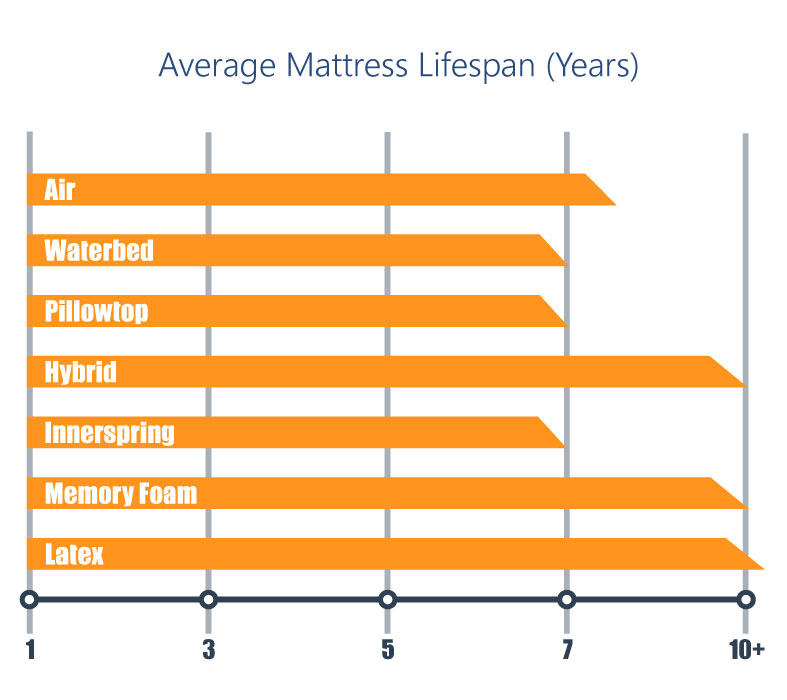
Step 2: Determine your Budget
A bit of personal backstory here…
Several years back I went to a store and purchased a mattress priced at $2800 which was not even the most expensive one there. During the first year or so it was perfect, and I felt rejuvenated, and I slept like a baby during that time.
But, something happened.
My new and awesome mattress started sagging and losing support and needless to say my back and neck suffered.
Another two years had passed until I decided to buy a new one online at $950 and this is the same one I’m using today after three years. Back to reality.
Not anyone will have the budget to walk into a store and buy something for several thousand dollars. Luckily, these days there are many online options you can choose from ranging from $100 to $500. There are also the best price mattress that can result in additional savings as well.
Don’t get confused here. More money does not mean better quality. If you think that some of these online options are somehow worse than in-store ones, you are badly mistaken. Stores tend to inflate the prices as much as 1000%.
Here are some guidelines for you:
- Higher Price does not mean Higher Quality – I bet you know this one, but it’s worth mentioning.
- Now that you have your new budget set, I’m guessing you are asking yourself “what type of mattress is best for me?” Let’s dig in.
Step 3: Choose Your Ideal Type and Material
Ok, so this is where most people will go with their personal preference rather than anything else. If someone says “latex is the best” I would not take this as final until I read other opinions and test it myself. Here are the most common options you will find these days.
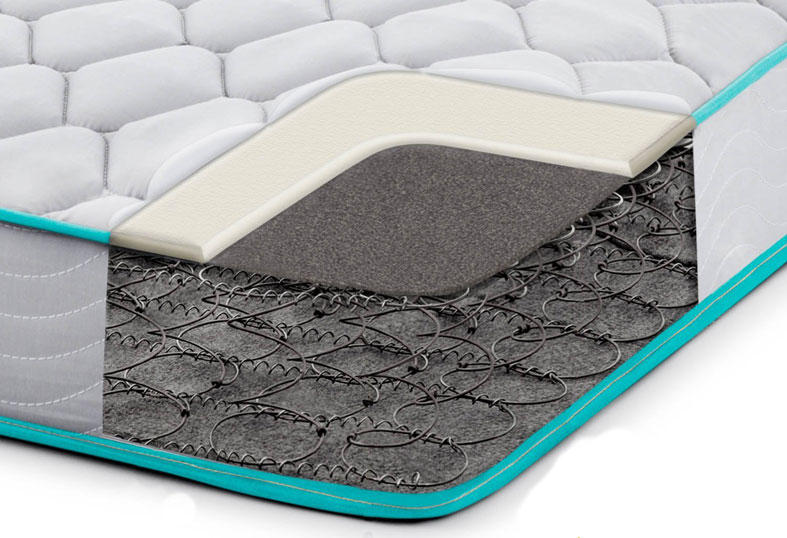
Innerspring (Coils)
This is the most traditional form of the mattress, and as of late, it’s received a bad rap. However, it is important to understand the potential benefits you could receive from going the traditional route, as well as the reasons why this option has lost its luster.
An obvious pro to purchasing a bed with springs is that it is one of the most affordable options on the market, due in part to a decrease in demand and also in part to so many other options that have the potential to be more comfortable and better for overall health.
Another consideration is that these mattresses are known to last for decades. Spring beds are exceedingly durable. Being that the springs are typically made from different types of metals, they tend to keep their shape for many years.
Additionally, being that they are the most traditional style, they are also the most familiar. People recognize and understand what they are getting when they purchase a bed with springs. There is no guess work with this option like there may be with memory foam or other newer options.
The last notable advantage to this style of bed is that, because of the amount of space located between the springs, this option allows for the most circulation of air. This flow helps to keep the temperature down, allowing for a cooler night’s sleep.
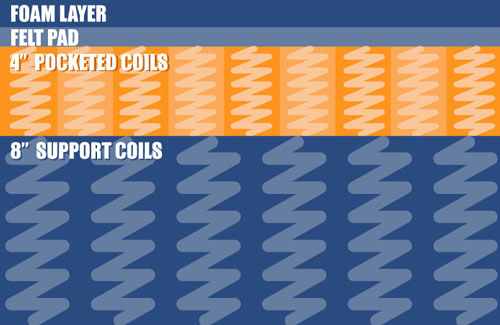
Example of the coil mattresses structure
Ideal for: People who want strong support, durability, cooling and great bounce. It also has an excellent edge support.
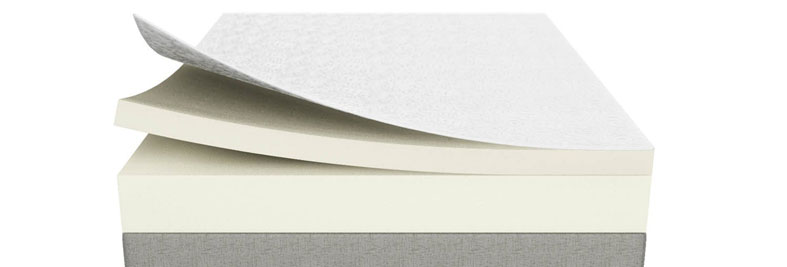
Latex
These mattresses are known for their fantastic cooling and comfort. Latex has a good bounce, responsiveness too.
Authentic latex foam is made from a tree called Hevea-Brasilenis tree, specifically from the white liquid extracted from it. Latex is harvested, and when the excess water is removed, you end up with raw material fantastic for various products, bedding systems being one of them.
It’s also great because you don’t get off-gassing and odors like with memory foam products.
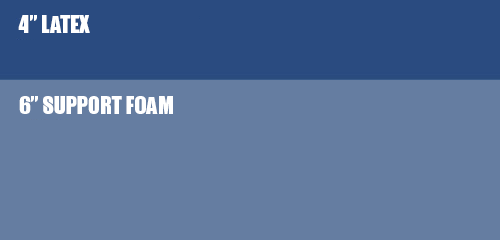
Example of the latex bed structure
There are two types to choose from:
- Natural – More healthy option and environment-friendly. But it’s also more expensive so expect to pay around $2000 for a good natural latex mattress
- Synthetic – Made by mixing synthetic polymers with natural tree sap. Less expensive of course but less healthy in turn.
Latex is best for people who want good cooling, responsiveness, and bounce.
More options: Top Rated Latex Beds to Choose From
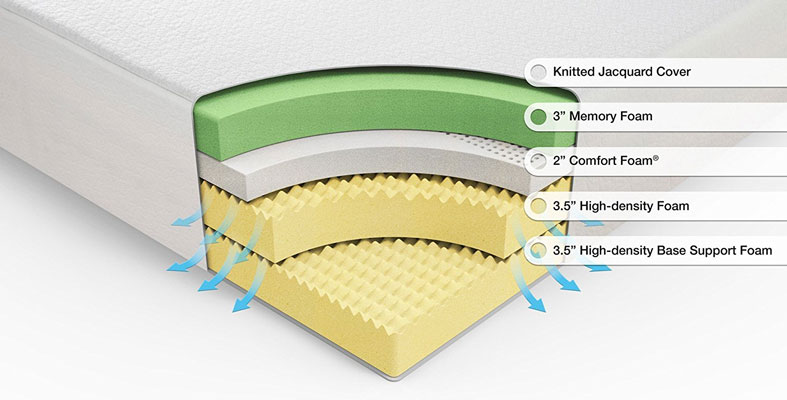
Memory Foam
Memory foam was first developed in the 1970’s by NASA as a safety material for seat cushions to protect pilots and passengers during plane crashes. Since then, the material has blossomed into the burgeoning product employed by virtually every mattress maker.
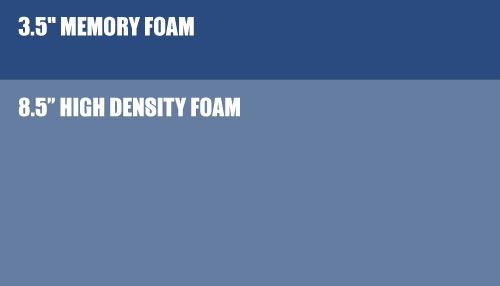
Example of the memory foam bed structure
Why has it become so popular? The answer is that it is said to provide superior comfort and support for the entire body. Anyone who’s pressed their hand into this material immediately understands its appeal.
Memory foam uniquely conforms to every inch of the body that is pressed into it. When you lift your body from the material, it slowly regains its original form, essentially making it perfect for every body type and every sleeper.
Another unique property of memory foam is its motion isolation capabilities. You may have seen those commercials with a lady jumping on a mattress with a glass of wine at the other end. Miraculously, the wine doesn’t spill.
The wine doesn’t spill because the energy from jumping is not transferred to other parts of the mattress. This translates to better sleeping for partners, because the tossing and turning of one does not affect the other, a feature that is not found among any of the other options on the market.
One of the most common issues that people experience is that the material retains heat. If you are someone who requires a cool night sleep, the memory foam option may not be the best choice for you. While the manufacturers are coming up with new and better ways to keep the heat down, the jury is still out as to whether or not they’ve succeeded.
Ideal For: People who want body shaping, contour, pressure relief and good support.
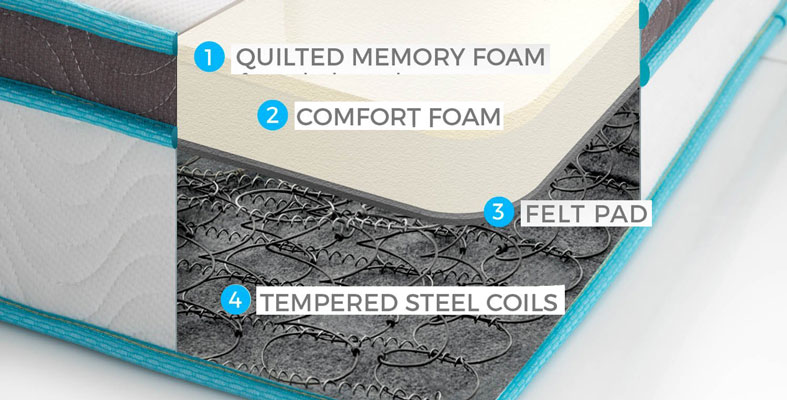
Hybrid
The hybrid mattress is an unusual combination of both traditional spring and memory foam. Providing the best of both worlds, this option offers the contouring and lack of motion transfer of foam coupled with the support of springs.
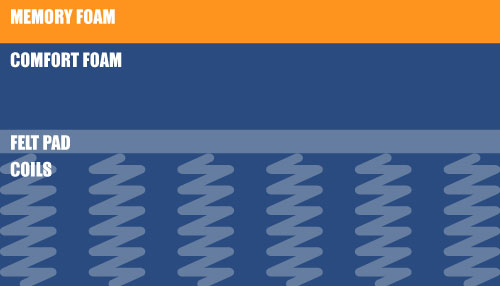
Structure of the hybrid bed- example
The term “hybrid” is very loosely used to describe the combination we just mentioned. However, the amount of foam for these beds varies widely depending on the level of firmness desired. Some options employ less than 1.5 inches of foam, lending to the fact that they more closely resemble that of a traditional spring bed rather than the more modern memory foam option.
To find the most optimal version of a hybrid, it’s best to choose the one that has close to 3 inches of foam. Anything above that, and you might as well forego the springs all together.
One negative aspect of these beds is the fact that they are one of the more expensive offerings you’ll find. Purchasing one of these could put you in the multiples of thousands of dollars, a significant investment, but a worthy one if you plan to enjoy it long term.
Good For: People who want best all around product with good support, bounce, cooling and pressure relief.
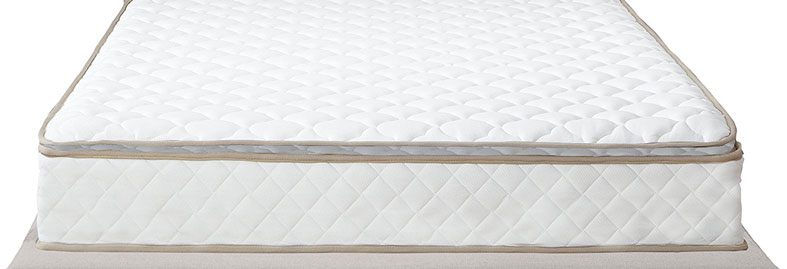
Pillow-Top
These are usually coil, latex or memory foam beds but have a layer of soft material sewn into the cover to make it more comfortable. These are also considered more luxurious and usually cost a bit more than standard options.
Good for: People who prefer more padding and softer feel.
Read more: Top Rated Pillow Top Beds
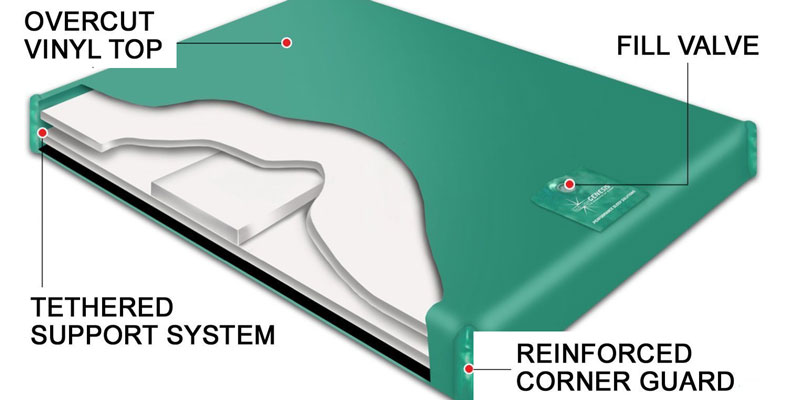
Waterbed
A rather weird option, but sometimes very fun especially if you love waterbed sex. Some of the most common reasons for opting in for this type is a backache and arthritis relief. These beds are also great for people with allergies.
Good for: People with back pain, arthritis and allergies and anyone looking for something less conventional.
Step 4. Determine your Ideal Sleeping Position and Firmness
Most of us have a unique way of sleeping every night. No matter if you sleep on your side, stomach or back, or even if you switch throughout the night you will have to consider and choose the ideal type of bed based on your preference. So, take a moment and think, what’s your favorite sleeping position because that determines the ideal firmness of your new bed.
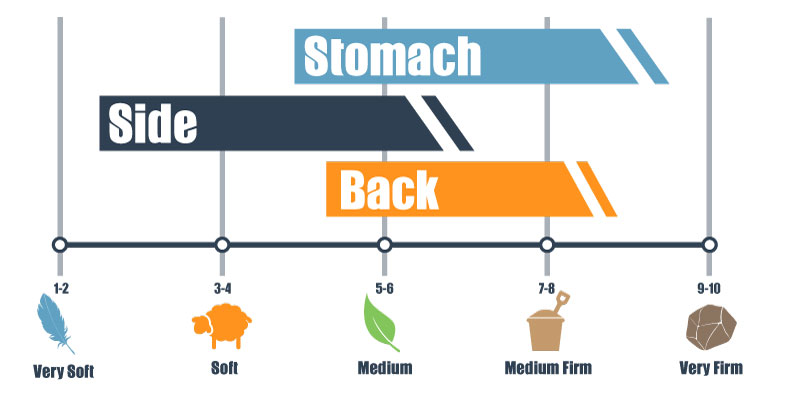
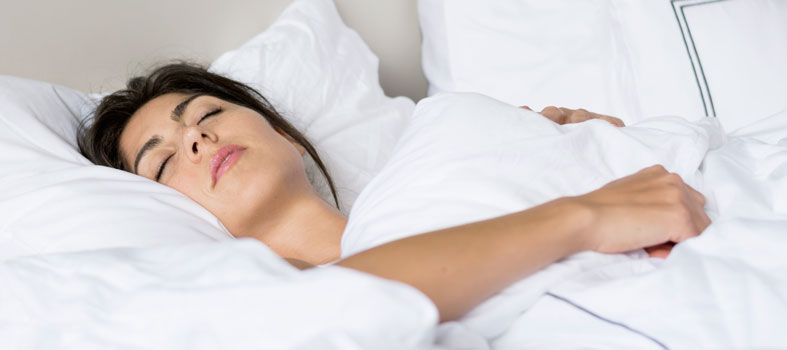
Back
The most important factor for back sleepers is firmness and support. If your mattress is too soft, your body will sink and cause back pain. You will need one that’s soft enough to provide pressure relief but still provides enough support. On a scale of 1-10, the perfect range would be 5-7.
According to The Better Sleep Council, only roughly 15% of people are back sleepers. Being that you are unique, it’ll take a special mattress to offer you the night’s rest you are seeking.
It’s the consensus that memory foam mattresses provide the highest level of comfort for people who sleep on their backs. This is because it provides adequate contouring to the spine while maintaining a longevity of proper support and structure.

Side
Many people who often sleep on their sides, endure discomfort and pain in their hip joints and shoulders.It’s usually due to unsuitable bedding.
It’s advised that you go with a bit softer option than for a back sleeper as these they provide for an equal distribution of pressure while you’re sleeping on your side.
Ideally, you want to choose a mattress with firmness level of 3-6 (out of 10) which falls under medium soft.
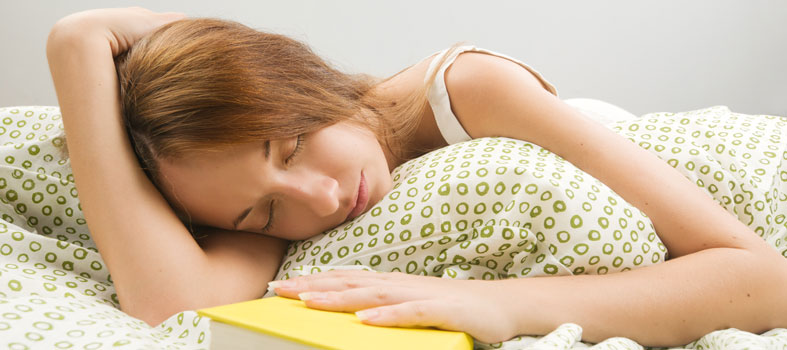
Stomach
This is considered the worst sleeping position. The most important thing for stomach sleepers is to provide equal distribution of weight across your entire body as your torso will apply most pressure. If the mattress is too soft (not enough support) your spine will curve causing back pain.
You will want to look for something in 5-7 range, which falls under medium to medium-firm. The good thing is that most options are in this range.
Step 5. Consider your Weight as a Factor
On first glance, you might be asking yourself, what does weight have to do with choosing a mattress?
The truth is, support, hug, feel, sinkage and even cooling will depend on your body type and weight. Another harsh truth is that there is no “best” mattress for every one of us.
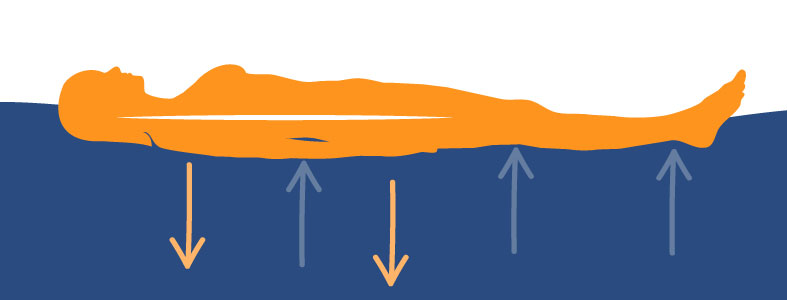
Let’s take a look at the following guidelines how to choose an ideal firmness level based on your weight:
-
Light (Less than 150 pounds) – You will want a medium firm bed around 5-6 firmness that doesn’t sink too much. If you are lighter than 150 lbs, you can even go with four since most beds are rated for average sleeper of 180lbs.
If you want a softer feel or if you are a side sleeper you can opt for 3-4 firmness range. These are soft or plush options. -
Average (150-200 pounds) – Like with the previous category you can choose industry standard of 5-7, providing perfect support and comfort.
Some sleepers will want to opt for more softer beds, and that’s perfectly fine, just go with 3-5 range if you sleep on your side and you are all set. -
Heavier Person (200+ pounds) – Heavier people can cause more pressure points on their back, and ideally you want to choose a firmer option to adjust for sinkage. If you are having problems with cooling, you ought to consider coil mattresses.
Ideally, choose a thick (12”) or thicker bed. This will provide good support and soft feel.
How to Select the Right Mattress for You – Summary
Hopefully, you have finished reading the above but even if you haven’t these five steps will ease your task of choosing a mattress for you or your family.
- Do you need a new mattress? – If your current bed is over eight years old, I’d consider replacing it no matter what. If you are having trouble sleeping or experiencing back or neck pain I would start searching.
- What is your current budget? – Don’t go with the cheapest option you find. Aim for $700-1200 range for a standard queen size bed. Of course, if you are buying smaller ones for your kid or teenager, the price will be considerably lower. Don’t spend less than $400 though. The quality drop-off is huge.
- What are your ideal type and material? – This is hands down the biggest challenge. Memory foam offers good contour and hug but sleeps hot. Traditional coil ones provide good bounce and cooling and are generally more durable. I recommend foam or hybrid to most people except for heavier sleepers who should opt for innerspring.
- What’s your preferred sleeping position? – This determines your ideal firmness level. On a scale of 1-10 (one being soft and ten being very firm), back sleepers will want to opt for a medium firm (4-7), side sleepers for more softer option (3-5) and stomach sleepers will need more support to avoid sinking (6-7 range).
- What’s your body type and weight? – Lighter sleepers (150lbs or less) will want a 1-2 points softer mattress to get the same feel like an average (180lbs) person. On the other hand, if you are a heavier person you will need more support and thicker mattress to support the weight.

